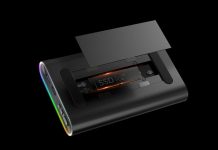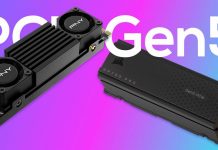Meaning of the abbreviations that differentiate SSD units and differences between the various models (SLC, MLC, TLC, QLC and PLC?)
SSDs have revolutionized the desktop and laptop industry, retiring old mechanical disks due to their speed, ease of installation, and resistance to shock and strain. This type of drive is now so widespread that it is possible to buy new SSDs of 1 TB and more at competitive prices, without having to focus on mechanical disks (now usable exclusively as data disks for NAS or as backup disks). During the purchase of an SSD you will surely have come across some strange acronyms, which apparently mean nothing but which in reality can indicate the quality of the chosen drive , regardless of the model or capacity.
In fact, in this guide we will show youhow to choose the fastest and most modern SSD disk , learning to also read the abbreviations that are next to the name of the SSD or in its description, so as to avoid older or obsolete products and focus only on disks that can offer the best performance.
How to choose the best SSD
In order to choose the best SSD we will have to pay attention to the abbreviations SLC, MLC, TLC, QLC and PLC , which are often not indicated in the titles of the products sold online or on the technical data sheets of the SSDs sold in a computer store. To obtain this information we will necessarily have to access the detailed technical data sheet of the drive, available at the manufacturer’s website. In order to understand in detail what these acronyms mean, below we will show you what they mean and why they are so important in choosing a new SSD.
NAND memory indications

The strange acronyms we talked about in the introduction represent different types of NAND cells, that is, the cells that function as a “data warehouse” within SSDs. Compared to mechanical disks (which used a magnetic disk and a head), SSDs use chips to store data, and within these chips we can find a variable number of cells, arranged in a particular way or functioning with precise characteristics. . The strange abbreviations therefore provide you with a precious indication of the type of NAND cells that we can find inside the drive, each with different performance characteristics.
Single level cell (SLC)
The simplest cell type is SLC. SLCs accept one bit per memory cell, offering considerable advantages in terms of speed and duration, obviously to the disadvantage of capacity (which will be linked to the amount of cells that can be inserted inside modern chips). This type of cells are very fast and last much longer than other types of cells, for this reason they have a very high price and are usually only offered for business SSDs; in the consumer environment (ie disks reserved for domestic use) they are used only to provide a fast cache to the entire disk: we will hardly find this type of cells on all the chips of the chosen drive.
Multi-level cells (MLC)
MLC SSDs allow you to write two bits to a cell (despite the name, which suggests a large amount of layers or cells), while retaining much of the single-cell benefits but increasing the total disk capacity. They tend to be slower than SLCs (albeit not by much), but they make up for this small flaw with greater capacity and better value for money.
Triple layer cell (TLC)
The cheapest SSDs are indicated with the abbreviation TLC. They allow you to save three bits in a single cell, but sacrifice something in terms of speed and duration (they don’t break immediately so to speak, but last less than the models seen previously). The TLC cell is currently the most popular in the consumer environment, since they still offer a good compromise between duration, capacity and speed, even if they are not recommended for use as data discs.
Quadruple or quintuple cells (QLC and PLC)
Modern SSDs are moving towards an ever greater compression of the amount of bits that can be recorded in a single cell, so as to be able in a short time to replicate the capacities reached by the old mechanical disks and exceed them (4TB or more) . However, such a high number of bits saved in a single cell has a not indifferent downside: they do not last long, at least when compared with the types of cells seen previously. Even if the minimum duration values go far beyond the real capacities with which SSDs are used in the home, this disadvantage must be taken into consideration: we run the risk of having to change the SSD within 5 years of purchase. From a performance point of view they are very good, even if they do not reach the speeds seen with single cells (SLC).
Differences between SSD and M.2
In addition to the distinction on the type of cell on which the disk writes data, it is essential to learn to recognize the form factors of new SSDs, as this can make the difference between a plain SSD and a superlative performance SSD . Currently the fastest technology for SSD disks is identified with the M.2 form factor , recognizable by the bar shape and sometimes also identified as NVMe memories .

These memories contain chips very similar to traditional SSDs but used a greater bandwidth (sharing it with PCI-Express X16 slots) and therefore also being 10 times faster than traditional SSD disk. In order to use an NVMe or M.2 memory it is necessary that the motherboard supports this type of memory : not all PCs have the appropriate slot, so it is advisable to check in advance before buying anything.
To learn more, we invite you to read our guides What are M.2 SSDs, how are they mounted and where to buy them and eMMC or SSD? Differences and comparison between data storage devices .
SSD recommended
Now that we know well the fastest SSDs on the market , we will show you below the best disks that you can buy on Amazon to upgrade your computers, also based on the technology supported by the motherboard in use.
The fastest SSD disks (2.5-inch form factor) that we can use on all desktop PCs and notebooks equipped with a SATA port (or SATA slot) are the following:
- Crucial MX500 500GB, up to 560MB / s
- ASENNO SSD 960GB 2.5 inch SATA
- KingDian SSD 1TB 2.5 inch SATA
- SanDisk 1TB Ultra 3D SSD, up to 560MB / s
- Samsung SSD 860 PRO 1 TB Internal SSD
If, on the other hand, we have a modern computer with support for M.2 or NVMe form factor memories , let’s see together which are the fastest disks that we can mount on the dedicated slot of the motherboard:
- Crucial P2 1TB Internal SSD, up to 2400MB / s
- Kingston A2000 NVMe PCIe SSD, 1TB
- Sabrent Internal SSD 1TB Rocket NVMe PCIe M.2 2280
- WD BLACK SN750 NVMe SSD, 1 TB
- Samsung SSD 980 PRO M.2, 1TB
Conclusions
When choosing a new SSD disk, it is advisable to immediately inquire about the technology used for the cells and the form factor , so as to know exactly its estimated duration, the performance it can achieve and the maximum capacity for that particular type of cell. If we don’t know which SSD to choose between two apparently identical models, we always focus on M.2 models, so as to be sure of having a higher reading and writing speed.
Still on the subject of computer disks, keep in mind that there are some options to tweak to keep your PC’s SSD fast .




